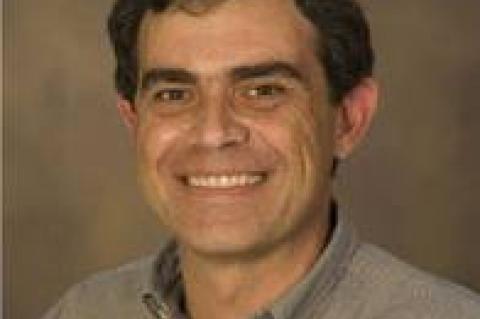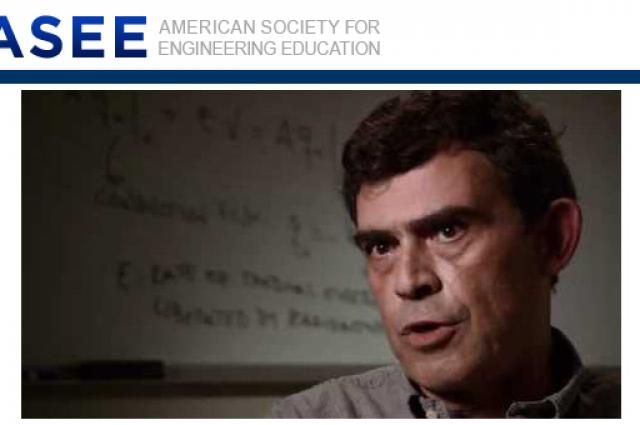Top ASEE Educator Award Honors UA Engineering’s Eduardo Sáez
In his 15 years at the UA, Sáez has inspired hundreds of students to pursue degrees and careers in chemical and environmental engineering. The students report back year after year that Sáez was one of the best professors they ever had and that they use what he taught them in their work every day.

Michael Cramer, a process engineer for an explosives manufacturer, elected 12 years ago to take Sáez’s class in rheology, just for fun and because he liked the popular professor’s teaching style. Cramer didn’t know then how important the study of the behavior of complex fluids would be in his work. And neither did Sáez.
“Now I share his story with every incoming class,” said Sáez.
Similarly, Kiley Yeakel, a graduate student at the University of California’s Scripps Institution of Oceanography in San Diego, is applying specific knowledge from Sáez’s course on transport phenomena to her research involving how waves break over coral reefs.
The basis of Sáez’s teaching philosophy is synthesis -- connecting chemical and environmental engineering fundamentals to everyday experiences within the realm of students’ understanding, like using basic cooking concepts to help students understand heat transfer mechanisms.
“I lay out the basics and show students how they can get to engineering applications using those fundamentals,” said Sáez.
Sáez’s passion for combining research and teaching, and for taking the road less traveled, started more than 35 years ago in Venezuela, where he was the first in his family to earn a university degree.
In a country with some of the largest oil reserves in the world, most of Sáez’s chemical engineering classmates were looking toward careers in the petroleum industry. Sáez, however, was thinking about teaching and contemplating how to mitigate the environmental consequences of the oil industry.
“There is a certain disconnect between industry and the environment, but companies do not have to harm the environment to profit,” said Sáez, whose current research focuses on technologies to eliminate contaminants in drinking water and metals from windblown mining dust. “There are always sustainable ways of doing things.”
Sáez, who previously taught at Simón Bolívar University in Caracas, Venezuela, the University of Bristol in England, and North Carolina State University, was drawn to the UA because of the chemical and environmental department’s holistic engineering approach to problem solving. It is one of only two or three university engineering departments in the United States that combine chemical and environmental engineering in one department.
“We are passionate about applying chemical engineering to solve environmental problems,” he said.
The holistic research approach that Sáez so greatly values transfers easily to academics. More than 90 percent of UA chemical and environmental engineering students participate in University research projects, and about 30 percent of the student population is made up of graduate students.
“They get motivated and go on to top grad schools -- Caltech, UC Berkeley, Stanford and MIT,” said Saéz.
Sáez joins two other UA chemical and environmental engineering professors, Paul Blowers and Kim Ogden, who won the Pacific Southwest ASEE outstanding educator award in previous years, Ogden in 1998 and Blowers in 2006.


